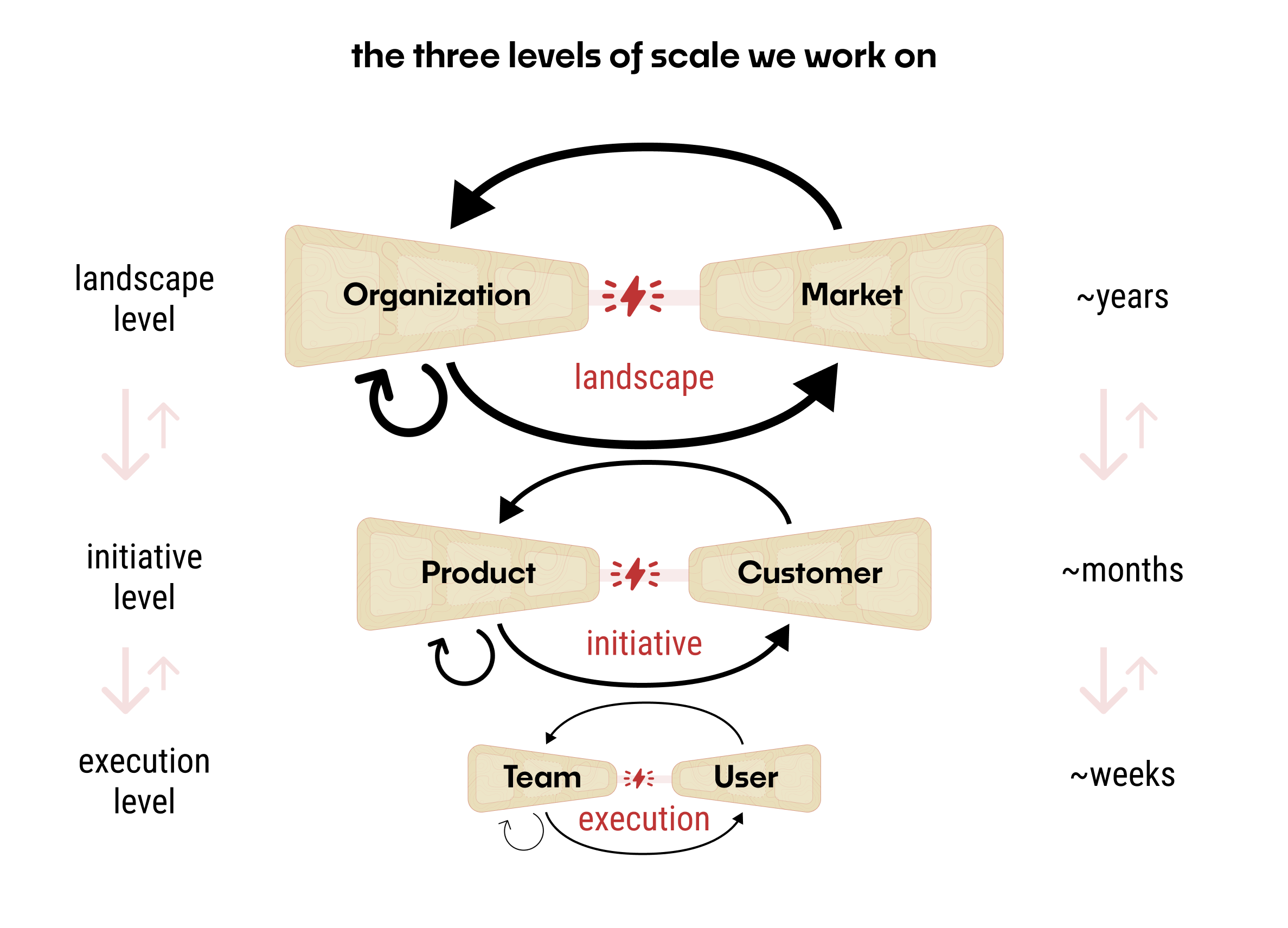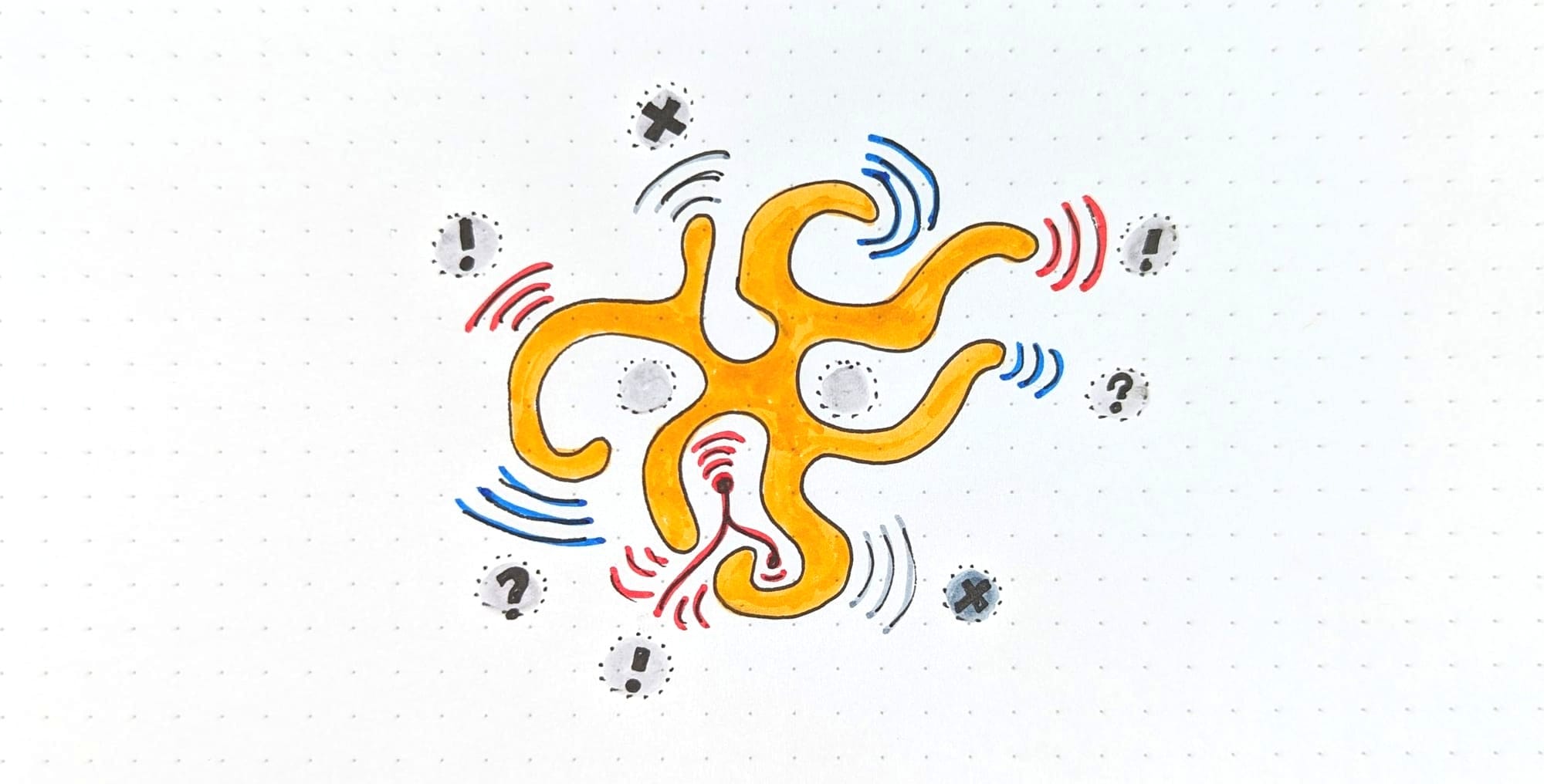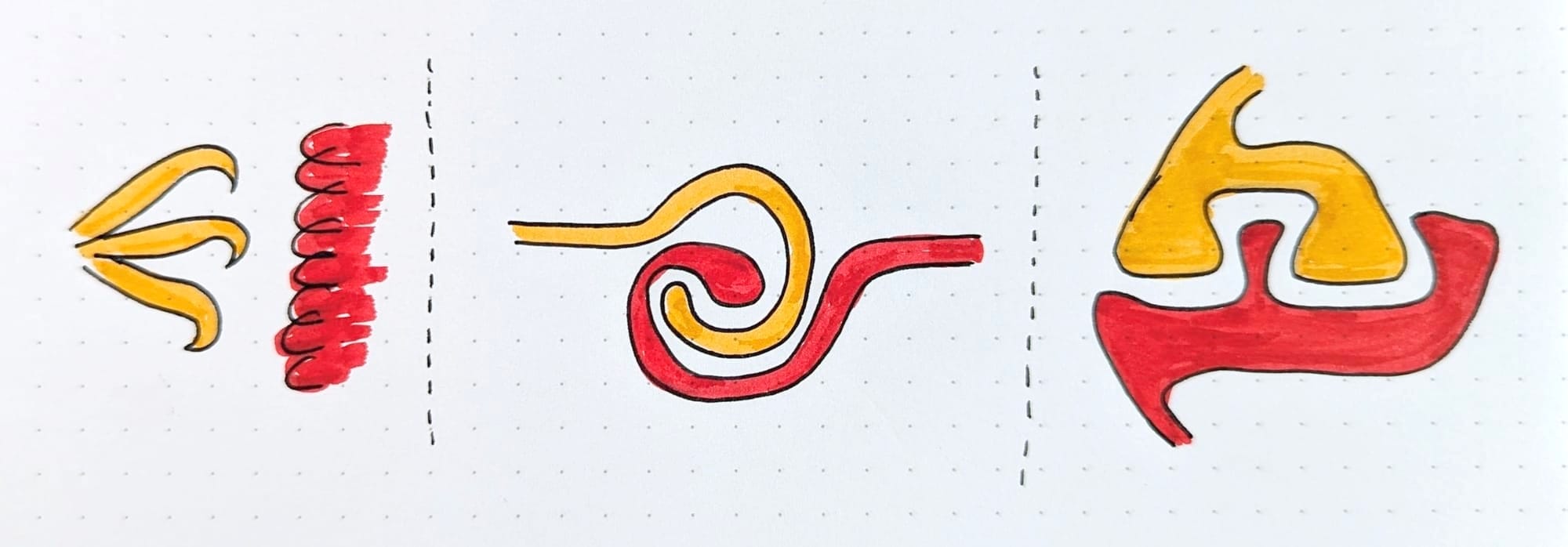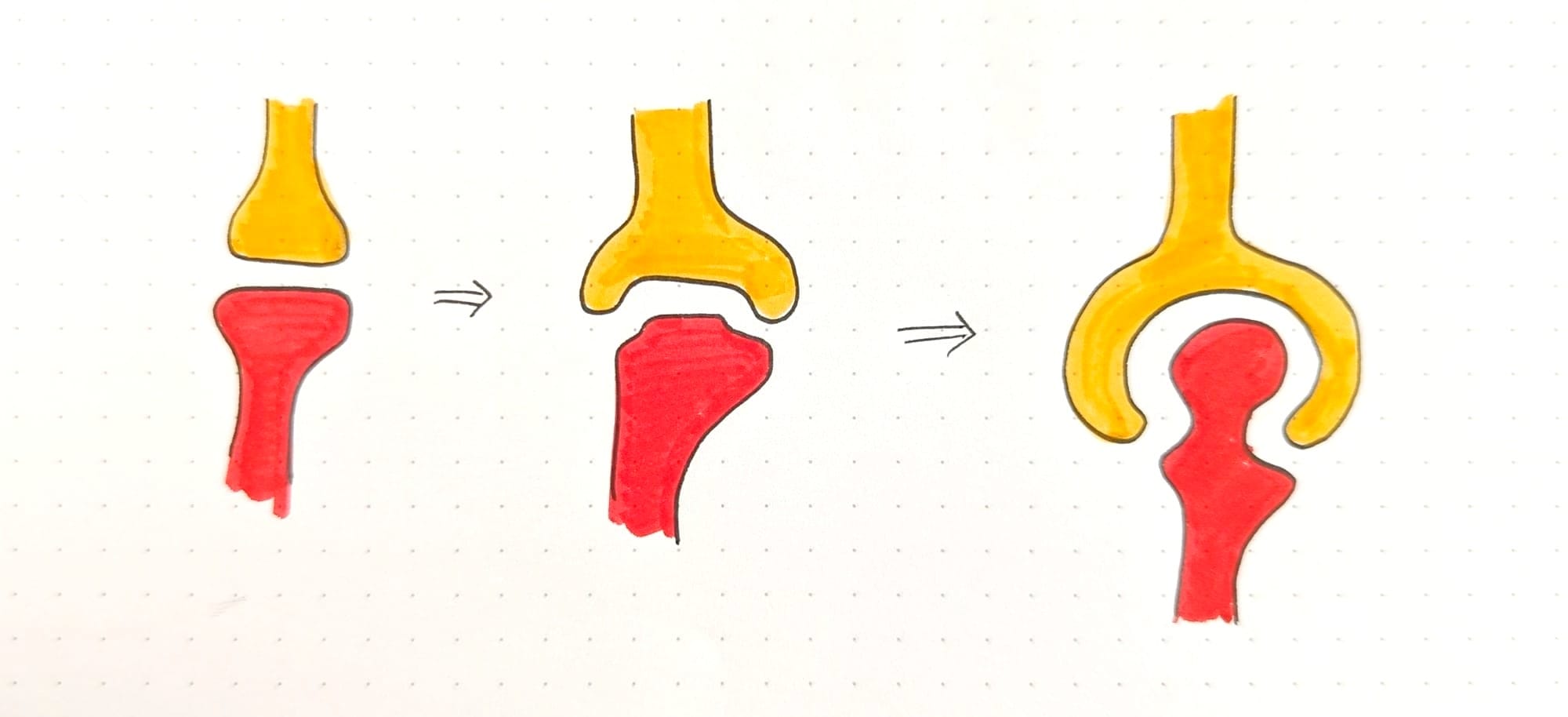Stepping away from the false dichotomy of "strategic vs. tactical," I made my first picture of organizational levels of scale in the essay on External Loops vs. Internal Cycles which is also the namesake of this very mailing list.
That picture looked like this (below), and I used it to highlight the different rituals, activities, and efforts that lived at each level of scale (the landscape level, the initiative level, and the execution level), contrasting externally-dependent loops and internally-dictated cycles.

Here we continue with the guiding metaphor of structural coupling, and take a new look at what's happening at each level of scale.
As always: it's more of a spectrum. But these distinctions track well enough with our real-world efforts to be constructive.
I. Landscape Scale
If we consider our organizations as organisms, they need to understand which directions are healthy for growth and what lies in each direction. They [should] have an internal purpose and criteria to help determine which available avenues are not only suitable, but desirable and valuable — which directions will unlock an increasingly favorable future. These are our concerns at the landscape scale.

Things move slowly at this level of view. Unlocking new opportunities or capturing value at the landscape scale may take years. The primary ongoing activity is characterizing the motion of the ecosystem in relation to organizational capability, and deciding where to act.
Sensing mechanisms at landscape scale monitor internal coherence, initiative outcomes, competitive progress, growth and revenue, cost and spend, strong signals from the market, and weak signals from the larger ecosystem.
Those signals are encoded and interpreted through things like:
- Financial and sales plans
- Far-field product roadmaps
- Missions and visions
- Customer segmentation
- Wardley maps
- Customer lifecycles
With these in hand, some teams define their diagnosis or understanding of the landscape scale as strategy itself. They do themselves a real injustice if said "strategy" does not flow into and receive signal from all three levels of scale.
II. Initiative Scale
When our purpose is clear, and we know where valuable opportunity lies, the team's efforts can be scoped or bounded to approach and unlock that value. What kind of thing we're trying to achieve and what will be different in the world when we do so are the primary concerns at the initiative scale.

Efforts at the initiative scale tend to move over some number of months, and are rarely expressed in weeks or years. Initiatives are our bets, objectives, prioritized areas of focus, our staffing decisions, and ever-present cycles of maintenance and repair.
Sensing mechanisms at the initiative scale are pointed at user needs, growth, churn, retention, product performance, cross-functional intelligence, market response, and engagement.
Those signals are encoded and interpreted through things like:
- Short-term product roadmaps
- Journey maps
- One-pagers
- Value chains
- Key metric dashboards
- Customer workflows
- Personas / archetypes
- User segmentations
A healthy initiative speaks to a specific outcome in terms of the organization and its ecosystem: it describes the current state and also describes how that state will be different when the initiative is complete. An initiative-scale effort characterized as "Ship Feature X" (so that feature X is then shipped) is a collection of execution-scale activities masquerading as a coherent initiative.
III. Execution Scale
Roadmaps and plans and ideas and initiatives are "real" when they are finally instantiated into the world: when they are adapted to their larger ecosystems. The process — the sequence — by which we achieve that adaptation is our concern at the execution scale.

Action at the execution scale is usually measured in weeks and occasionally days: this is the amount of time it takes to meaningfully make a small step and understand its implications on the larger arc of the work.
The sensing mechanisms here tend to look at user activity, workflows, units of work, team trajectory, user interactions, hypotheses, customer feedback, opportunities, risks, functional demos, and usability.
Those signals are encoded and interpreted through things like:
- Sprint plans
- Prototypes
- Risk/hypothesis dashboards
- Customer session debriefs
- User flows
- Opportunity-solution trees
- Usability issues
- Activity metrics
This is the place of operating procedures, shared understanding, and methods of delivery — all closely coupled to the external or internal environment we wish to change.
Rather than mere tactics, the methods of delivery and modes of operation we choose for executing in a given initiative are strategic choices; the inability to execute or adapt [well-formed] intentions to reality is a failure of strategy, no matter which level of scale it occurs at.
A Missing Middle?
The higher our vantage point, cycles take longer but pivotal actions occur much less frequently. The closer we are to the action, the cycles are remarkably shorter while relevant events are much more frequent.
Somewhere in the middle, we need to bridge this gap between context-driven adaptations (action) and intentions for evolving our relationship to the ecosystem (landscape). It's hard enough to build a useful landscape view on evidence and external context instead of unexamined beliefs and institutional stories.
And the larger the organization, the harder, it seems, to connect all three levels. Annual and quarterly planning begin to carry a cost of pain, and OKRs that ought to cascade from landscape to initiative to action end up being self-referential and gamed-for-success; they don't characterize important features of actual, external reality.
Continuity through all three levels of scale — effective, strategic motion — is hard.
This is Loops and Cycles, a weekly mailing list exploring the processes that produce good products (and organizations). Share it with your team, send it to a friend, or send me your thoughts and questions.


![Three Levels of Scale [LC04]](/content/images/size/w100/2024/05/lc04_00-banner-1-1.jpg)
